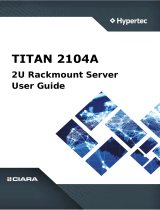
v
Contents
5.2.3 Menu items..................................................................................5-8
5.2.4 Submenu items ........................................................................... 5-8
5.2.5 Navigation keys ........................................................................... 5-8
5.2.6 General help................................................................................5-8
5.2.7 Configuration fields ..................................................................... 5-8
5.2.8 Pop-up window............................................................................5-8
5.2.9 Scroll bar ..................................................................................... 5-8
5.3 Main menu ..................................................................................................5-9
5.3.1 System Language [English] ........................................................ 5-9
5.3.2 System Date [Day xx/xx/xxxx] ..................................................... 5-9
5.3.3 System Time [xx:xx:xx] ............................................................... 5-9
5.4 Performance Tuning menu ......................................................................5-10
5.5 Advanced menu .......................................................................................5-12
5.5.1 Trusted Computing.................................................................... 5-13
5.5.2 PSP Firmware Versions ............................................................ 5-13
5.5.3 APM Configuration .................................................................... 5-13
5.5.4 Onboard LAN Configuration ...................................................... 5-14
5.5.5 Serial Port Console Redirection ................................................ 5-15
5.5.6 CPU Configuration .................................................................... 5-19
5.5.7 PCI Subsystem Settings ........................................................... 5-20
5.5.8 USB Configuration .................................................................... 5-21
5.5.9 Network Stack Configuration..................................................... 5-22
5.5.10 CSM Configuration .................................................................... 5-23
5.5.11 NVMe Configuration .................................................................. 5-24
5.5.12 SATA Configuration .................................................................. 5-25
5.5.13 AMD Mem Configuration Status................................................ 5-25
5.5.14 iSCSI Configuration...................................................................5-26
5.6 Chipset menu ...........................................................................................5-27
5.7 Security menu ..........................................................................................5-28
5.8 Boot menu ................................................................................................5-32
5.9 Tool menu ................................................................................................. 5-33
5.10 Save & Exit menu ..................................................................................... 5-34
5.11 AMD CBS menu ........................................................................................5-35
5.11.1 CPU Common Options.............................................................. 5-36
5.11.2 DF Common Options ................................................................ 5-39
5.11.3 UMC Common Option ............................................................... 5-41
5.11.4 NBIO Common Options ............................................................ 5-51
5.11.5 NTB Common Options .............................................................. 5-55





















